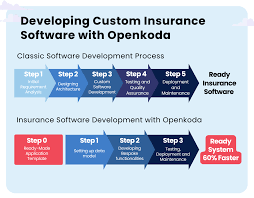
This New Insurance Trend Could Replace Traditional Policies
The insurance industry is going through a quiet revolution—and it’s not just about digital apps or faster claims. A growing number of consumers and businesses are shifting away from old-school annual policies and fixed premiums. Instead, they’re embracing a flexible, tech-driven alternative that’s changing the way we think about coverage: on-demand insurance.
From ride-share drivers to remote freelancers to smart-home owners, people are discovering that one-size-fits-all policies don’t always fit. On-demand insurance offers a tailor-made solution—and it could eventually replace traditional insurance models altogether.
Here’s what’s behind the trend and why it might be the future of how we protect what matters.
1. What Is On-Demand Insurance?
On-demand insurance allows you to purchase coverage only when you need it, for as long as you need it—sometimes by the hour, day, or even minute.
It’s often activated through an app or online portal and can be paused, modified, or canceled instantly. Think of it as the “Uber of insurance”—fast, flexible, and user-controlled.
2. Why It’s Gaining Popularity
Several factors are fueling the rise of on-demand insurance:
-
Gig economy boom – Freelancers, Uber drivers, and delivery workers need flexible coverage that fits unpredictable schedules.
-
Smart tech adoption – People now expect real-time control over services, including insurance.
-
High premiums – Traditional annual policies often charge for unused coverage or bundled features people don’t need.
-
Lifestyle changes – From remote work to travel shifts, people are no longer living predictable 9-to-5 lives—and insurance is adjusting to match.
3. What You Can Cover On Demand
On-demand insurance is surprisingly versatile. Depending on the provider, you can insure:
-
Electronics and gadgets (phones, laptops, cameras)
-
Rental cars or personal vehicles
-
Short-term travel or vacations
-
Home-sharing rentals (like Airbnb)
-
Freelance liability
-
Single events or gigs
-
Personal injury or health gaps
This approach is especially appealing to younger consumers who value flexibility and control over rigid, long-term contracts.
4. Benefits That Make It a Game-Changer
Here’s why experts say on-demand insurance could reshape the industry:
-
✅ Instant activation – No paperwork, waiting periods, or long approval times
-
✅ Pay-as-you-go pricing – You only pay for what you use
-
✅ Customization – Choose coverage by time, item, or activity
-
✅ No long-term commitment – Cancel or change coverage at any time
-
✅ Mobile-first experience – Easy to manage from your phone or laptop
These features are turning everyday people into their own insurance managers—without needing to talk to an agent or wait for business hours.
5. Is Traditional Insurance in Trouble?
While on-demand insurance is growing fast, it’s not replacing everything—yet. Complex needs like life insurance, long-term health coverage, or major home policies still benefit from comprehensive, ongoing protection.
But for low-risk, short-term, or lifestyle-specific coverage, traditional policies may soon feel outdated.
Insurtech startups and even big-name insurers are taking notice. Companies like Lemonade, Zego, and Trov are already reshaping the market with flexible, app-based coverage.
6. What to Watch Out For
Like any innovation, on-demand insurance has its limitations:
-
Limited coverage caps – You may not get the same protection as a traditional plan
-
Policy gaps – Turning coverage off and on can leave risky windows of exposure
-
Regulatory differences – Not all policies are available in every state or country
-
Data-sharing concerns – Many on-demand apps require sharing personal info for pricing and risk assessment
Be sure to read the fine print—and understand the risks of going “lightweight” with your protection.
Final Thought
We insure everything from homes to phone screens—but how we do it is changing. On-demand insurance offers the kind of personalization and convenience that today’s consumers expect, and it’s already disrupting the traditional model.
Could it fully replace long-term policies? Maybe not just yet. But for the modern lifestyle, it’s clearly where the future is headed.
Whether you’re an occasional traveler, gig worker, or just tired of paying for insurance you barely use, this trend is worth exploring. Because when it comes to insurance, flexibility might be the best coverage of all.
